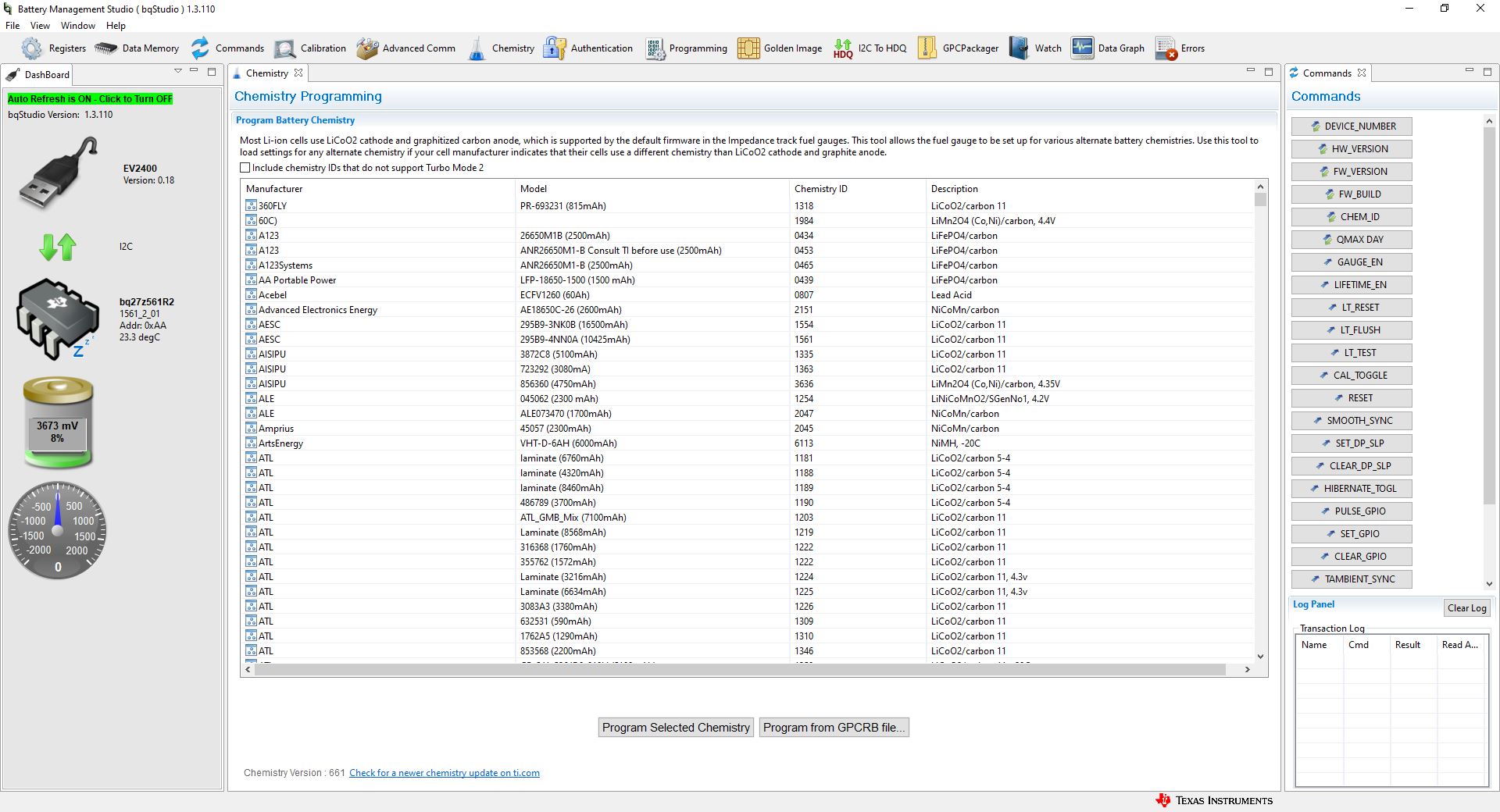SLUUBU0A June 2018 – July 2022 BQ27Z561
- BQ27Z561EVM-011 EVM Single-Cell Impedance Track™ Technology
- Trademarks
- 1Features
- 2BQ27Z561-Based Circuit Module
- 3Circuit Module Physical Layout, Bill of Materials and Schematic
- 4EVM Hardware and Software Setup
- 5Troubleshooting Unexpected Dialog Boxes
- 6Hardware Connection
- 7Operation
- 8Related Documentation from Texas Instruments
- 9Revision History
7.3 Setting the Chemistry
The chemistry file contains parameters that the simulations use to model the cell and its operating profile. It is critical to program a Chemistry ID that matches the cell into the device. Some of these parameters can be viewed in the Data Flash section of the Battery Management Studio.
Press the Chemistry button to select the Chemistry window.
- The table can be sorted by clicking the desired column. For example: Click the Chemistry ID column header.
- Select the ChemID that matches your cell from the table.
- Press Program Selected Chemistry to update the chemistry in the device.
 Figure 7-3 Chemistry
Screen
Figure 7-3 Chemistry
Screen